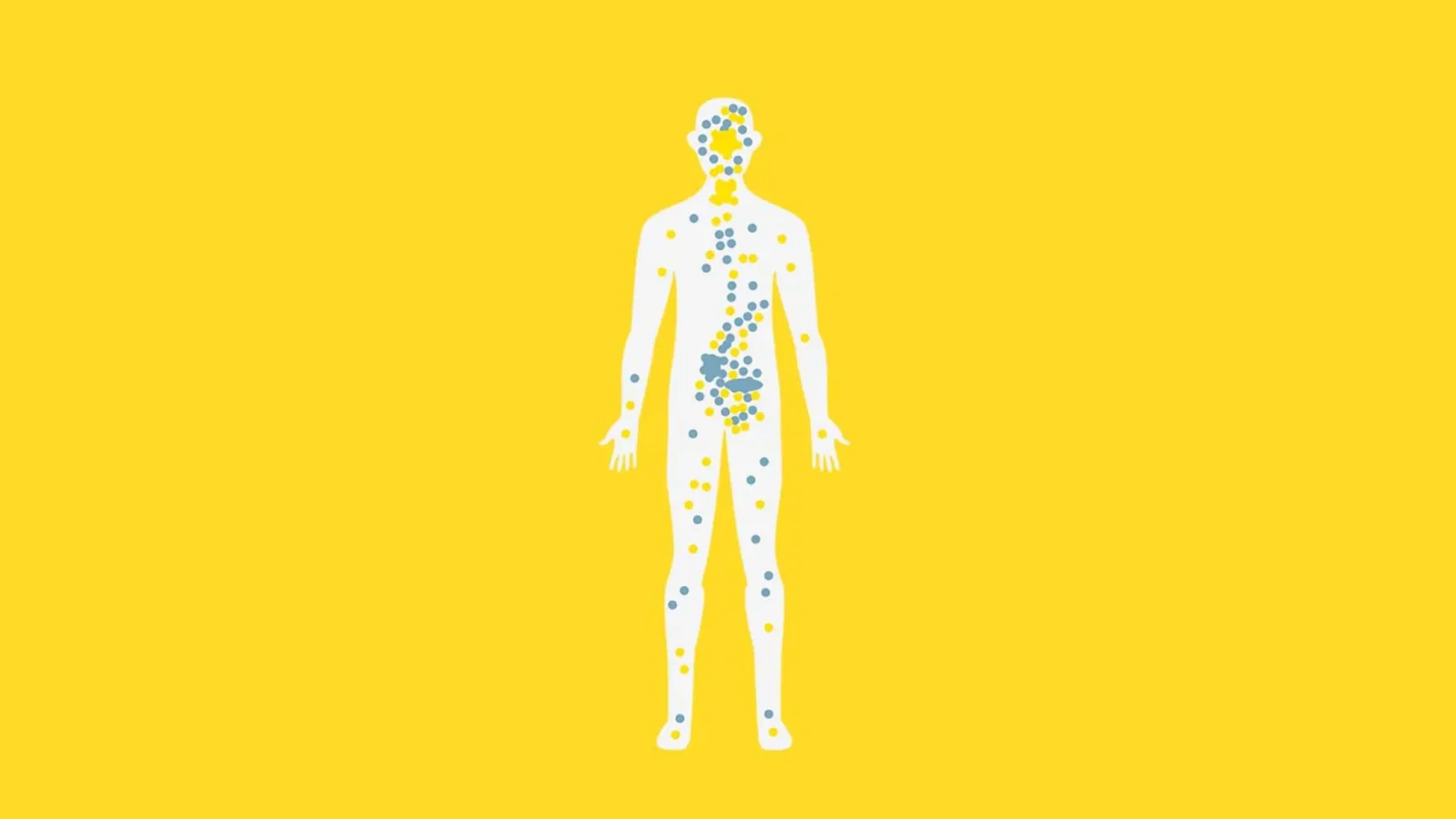
Imagine an orchestra, where every instrument plays its distinct yet harmoniously coordinated part. Such is the magnificent complexity of the human body. This living symphony is what cannabidiol, commonly known as CBD, interacts with. As a compound found in cannabis and hemp, CBD has captured the world’s attention due to its potential health benefits. It’s the science behind this interaction that we’ll explore today. Let’s delve into the body’s endocannabinoid system and CBD’s relationship with it.
Explaining these interactions is no small feat, and a solid understanding of our bodies’ intricate mechanisms is essential. After all, knowledge is power. Let’s equip ourselves with this power to comprehend CBD health benefits and its impact on our well-being.
The Endocannabinoid System (ECS)
Enter the endocannabinoid system (ECS), a complex network involved in maintaining homeostasis, or the body’s equilibrium. Think of it as an essential backstage crew, silently working to maintain balance in a range of bodily functions. Everything from mood, appetite, sleep, and immune response, to pain perception, is under its purview. This elaborate system is composed of endocannabinoids (natural compounds resembling cannabis), enzymes that build and break these endocannabinoids down, and receptors that these compounds bind to.
The ECS, fascinatingly enough, may have a symbiotic relationship with CBD. While our bodies generate endocannabinoids on demand, factors like stress, illness, or injury may disrupt this equilibrium, causing the ECS to underperform. Unlike THC (tetrahydrocannabinol), the compound in cannabis that gives the ‘high’, CBD does not bind directly with the ECS receptors. Instead, it influences the system to use more of its endocannabinoids.
Cannabinoids and Receptors

Every instrument needs a player, and in the ECS, the players are the CB1 and CB2 receptors. These receptors are found throughout the body, with CB1 mainly located in the brain and central nervous system, and CB2 found in the immune system and peripheral organs. When endocannabinoids or phytocannabinoids (like CBD) engage them, they trigger a response that helps the body maintain balance.
The subtlety of CBD’s interaction with them sets it apart. Rather than binding directly with them like its cousin THC, cannabidiol acts more like a regulator, modulating the receptors’ activities. This means that it can influence how other cannabinoids, including the body’s endocannabinoids, interact with these receptors. It gently guides the orchestra, rather than stealing the spotlight.
Mechanisms of Interaction
The complexity of CBD’s interaction with the ECS is nothing short of fascinating. It employs a multi-pronged approach, involving several biological pathways. Firstly, it inhibits the enzyme FAAH (Fatty Acid Amide Hydrolase) that breaks down anandamide, a crucial endocannabinoid. This increases the presence of anandamide in the body, thereby promoting its beneficial effects.
Secondly, CBD interacts with non-ECS receptors that play roles in pain perception and inflammation, like the vanilloid receptor. This interaction with various receptors explains why CBD’s effects can be so diverse. It’s like an orchestra conductor skilled in leading a variety of musical sections, enhancing the overall performance.
Effects on Neurotransmitters

Like a complex wiring system, our brain uses chemicals called neurotransmitters to send signals. Serotonin, often dubbed the ‘happy chemical,’ and glutamate, responsible for cognitive functions, are two such examples. It’s here, in the realm of neurotransmitters, that CBD demonstrates its broad range of influence.
In particular, CBD’s interaction with the 5-HT1A receptor, a subtype of the serotonin receptor, has been of interest to researchers. This receptor plays a key role in anxiety disorders, depression, and stress. CBD’s potential to enhance serotonin signaling through this receptor could explain its reported anti-anxiety and antidepressant effects. This intricate dance between cannabidiol and neurotransmitters is just one piece of the puzzle in understanding how this compound can impact mental health.
Anti-Inflammatory Properties
Soothing the body’s response to injury, infection, or disease is another notable CBD performance. Inflammation is a protective response, but when it becomes chronic, it can lead to several diseases. Cannabidiol appears to play a role in curbing this overactive response.
Specifically, CBD interacts with the CB2 receptors found in the immune system, reducing cytokine production. Cytokines are proteins that play a crucial role in signaling inflammation. By reducing their production, it may help manage chronic inflammation. This potential to bring harmony back to the body’s response system underscores CBD’s reputation as a wellness aid.
Pain Perception
CBD’s interaction with the body isn’t limited to neurotransmitters and inflammation. It also influences the way we perceive pain. Our bodies have a complex network of receptors, chemicals, and proteins responsible for signaling pain—think of it as an alarm system, alerting us to potential harm.
Studies suggest that cannabidiol might mute this alarm system. Interacting with both the ECS and non-ECS receptors involved in pain perception, such as glycine and vanilloid receptors, could help alleviate both chronic and acute pain. Again, it’s the conductor enhancing the symphony’s performance, this time by taking the edge off the dissonance.
Anxiety Regulation

As anyone who’s been in a noisy, chaotic environment can attest, an overactive mind can be stressful. Anxiety disorders are among the most common mental health issues, and emerging research suggests that CBD could offer some relief.
CBD’s potential to regulate anxiety primarily stems from its interaction with the 5-HT1A serotonin receptor. By enhancing serotonin signaling, CBD could promote feelings of relaxation and well-being. Coupled with its potential effects on the hypothalamic-pituitary-adrenal (HPA) axis – the body’s central stress response system – it might help quiet the mind’s cacophony, bringing about a calming melody.
Impact on Sleep
Cannabidiol may also play a role in lulling the body’s orchestra into a restful pause. Sleep disorders, such as insomnia, affect many people, and preliminary research points to CBD as a potential sleep aid.
CBD’s potential effects on sleep appear to be multi-faceted. It may affect the sleep-wake cycle by interacting with receptors in the brain that govern the body’s daily sleep/wake rhythms. Reducing anxiety and pain, which are common culprits of sleep disturbances, better sleep is promoted. Like a gentle lullaby, it might help the body’s symphony fall into a restful, restorative slumber.
Final Thoughts
In this intricate dance of life, where our bodies continuously strive for balance, CBD appears to be a promising partner. From the endocannabinoid system and neurotransmitters to inflammation, pain perception, and sleep, the breadth of CBD’s interaction with the human body is awe-inspiring.
However, like any musical composition, the full score of CBD’s effects is still being written. Research is ongoing, and while early findings are encouraging, more comprehensive studies are needed. As we continue to explore this promising compound, remember to consult with healthcare professionals before integrating cannabidiol into your health and wellness routine. Let the rhythm of knowledge guide you on this fascinating journey of discovery.
















